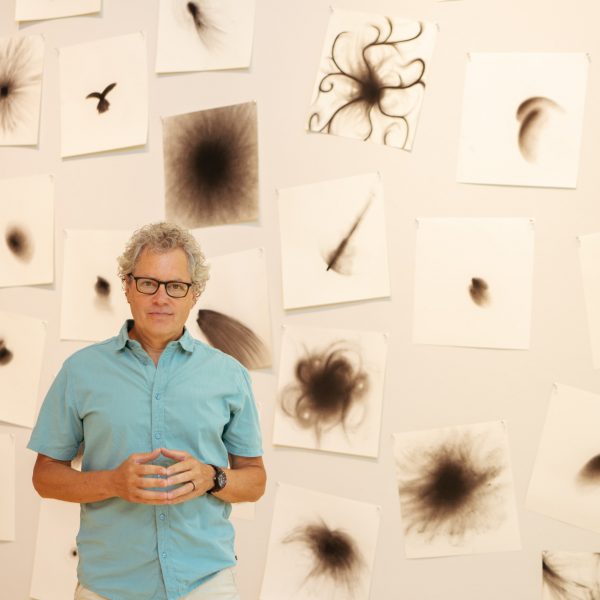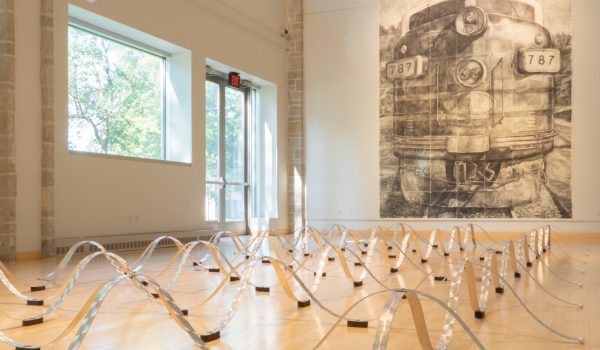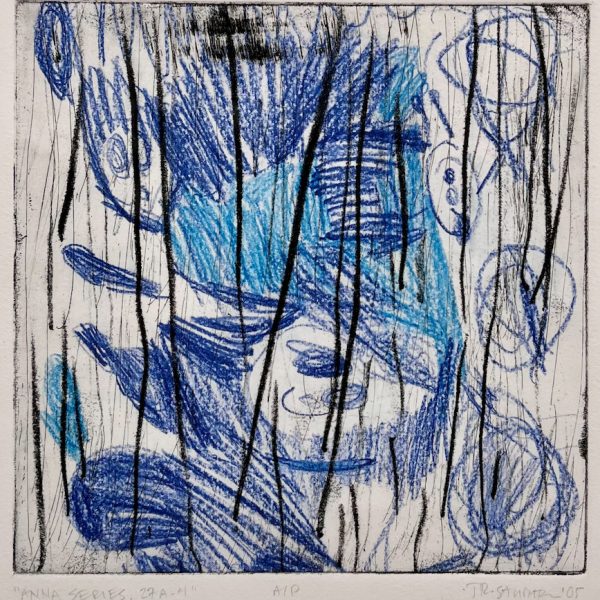
Anna series, 2006
Inkjet and intaglio print
These abstract prints are a collaboration between Saurer and his daughter, Anna. Anna was around three years old when she made the drawings. Her materials included finger paint, watercolors, and construction paper. Saurer scanned and printed them, unaltered, and combined them at random with his own abstract traditional copper-plate intaglio imagery. In the series’ final image (lower right), Anna introduces representational imagery for the first time, rendering herself, her mom, and her dad.
Framed prints are available individually. Please inquire with museum staff.
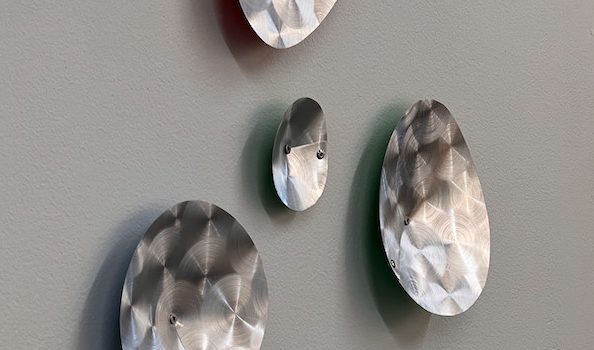
Chorus, 2013
Aluminum and enamel
This sculptural installation was inspired by the coast of San Salvador island in the Bahamas, where Saurer has taught a drawing class during St. Olaf’s Interim in January. Removing his goggles after a dive, Saurer noticed water droplets reflecting and refracting light—the vibrant colors of the reef and the convex and concave shapes of bubbles still in his mind’s eye. The title is a play on the words chorus, chorale, choral, coral, and references the formal elements present in music and the marine environment of San Salvador.
This work is not available for distribution.
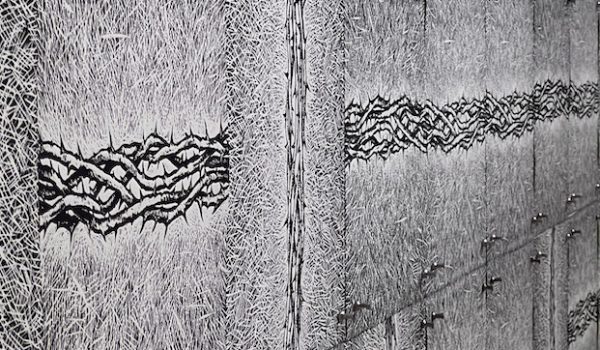
Criss-Cross, 2012
Woodcut print
Saurer is intrigued by printmaking’s propensity for the “multiple.” One block, like this square woodcut, can be printed countless times. This inherent reproducibility creates the potential for large, tiled compositions with many possible variations. In this installation, the orientation of each print is determined by chance. A hand-made spinner with options “A” (vertical) and “B” (horizontal) determines the composition, yielding a different result each time the work is shown.
This work is available in sets of six. Please inquire with museum staff.
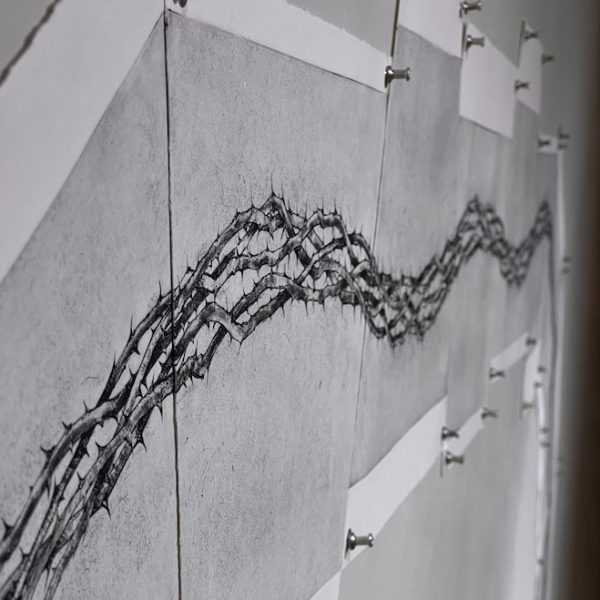
Crown, 2009
Intaglio print
In this curvilinear print matrix, Saurer designed a single copper intaglio plate so that the edge of each print adjoins with the next. In mathematics this is referred to as edge-to-edge tiling, defined by a polygonal tessellation where adjacent tiles share one full side. This series of prints can be arranged in a variety of forms, including a circle, oval, arc, and curved line.
This work is available in sets of 12, which form a circle. Please inquire with museum staff.
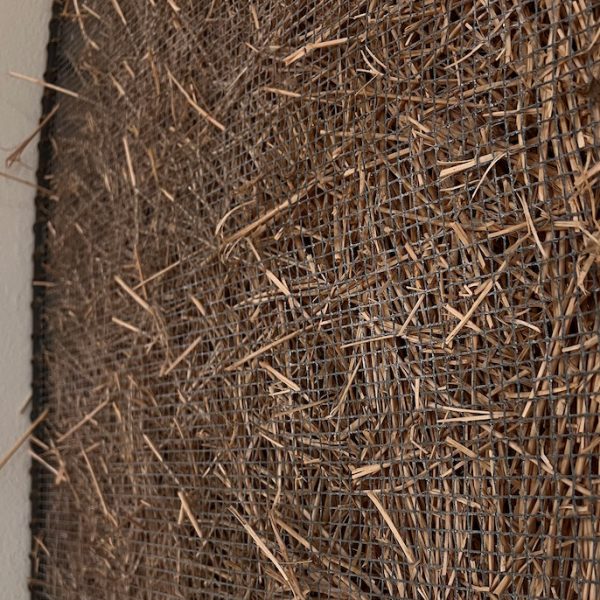
Hey! 1995
Welded steel, screen, alfalfa hay
This work began as a play on words, much like Segue, Saurer’s undulating floor sculpture on view in Groot Gallery. The choice of galvanized metal and hay are inspired by rural Colorado, where the sculpture was constructed while the artist was in graduate school. While straw is much easier to source than hay, Saurer insisted on alfalfa hay, which he sourced from a farm outside Fort Collins.
This work is not available for distribution.
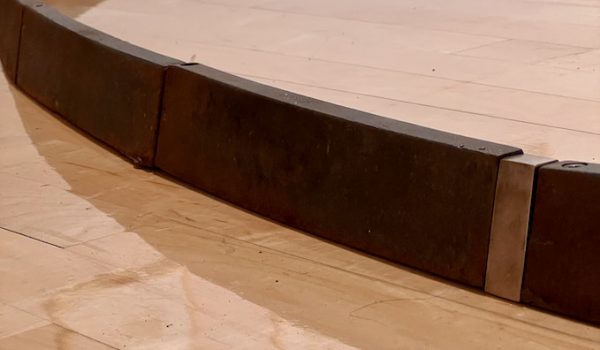
Loco-Motive, 1995
Cast iron and bronze
Spread across the floor like an industrial platform, track, or base, this cast iron ring is composed of identical segments, pinned and locked together like a child’s toy train set. Tilting both inward and outward, a subtle sense of vertigo may be perceived.
This work is available as a complete set. Please inquire with museum staff.
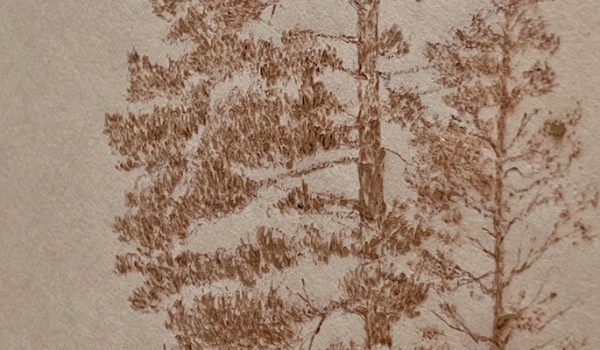
Monument Series, 2016–present
Branded Mulberry paper
Using a hot stylus to sear imagery onto delicate Mulberry paper, Saurer depicts subjects that loom large in the cultural imaginary of the American West. Shown here are Ponderosa pines, but the greater series includes trout streams, hay bales, farmsteads, and windmills. Increasingly threatened by wildfires caused by climate change and rapid commercial development, Saurer’s treatment of these subjects emphasizes their ephemerality.
This work is not available for distribution.
“Origins – Dry (Graphite) and Wet (Ink)”
single-channel video
Saurer created these videos by borrowing a microscope from St. Olaf’s Biology department to capture the act of drawing in minute detail. Graphite from a pencil and ink in a ballpoint pen is applied to paper using a tiny gesture. Each drawing is the size of a lentil.
This work is not available for distribution.
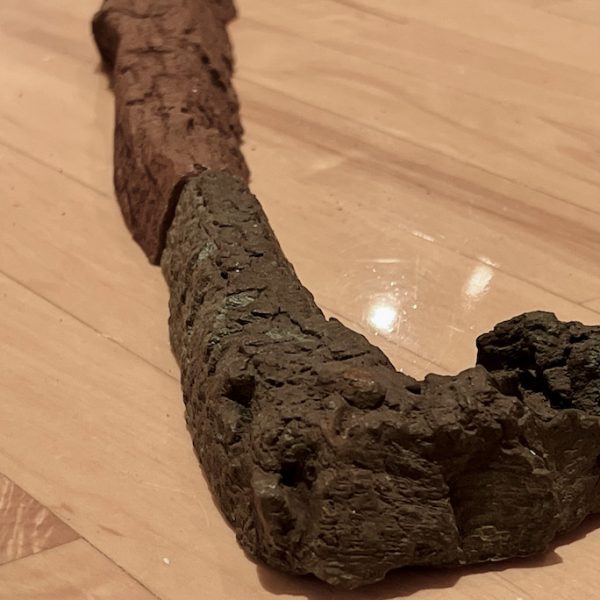
Piqua, 1995
Cast iron and bronze
One of the earliest works in the show, these cast iron and bronze elements are impressions of cottonwood bark from northern Colorado. The title refers to the birthplace of silent film legend Buster Keaton—a personal hero and creative role model for Saurer.
This work is available as a complete set. Please inquire with museum staff.
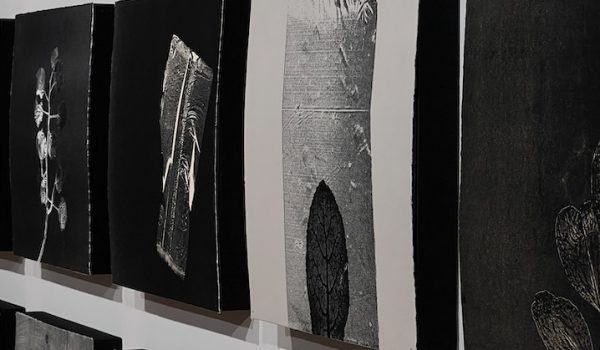
Tender Land Series, 2019
Monoprint
Prairie grass, discarded Trump straw, cottonwood leaf. Found objects collected from the ground are the subject matter of this series. Organic and human-made, their impressions are captured simply by masking or transferring ink from plate to paper. In some cases, the artist includes “ghost” prints – a second transfer that is possible when there is some ink left on the plate, yielding a paler print than the original.
Prints are available individually. Please inquire with museum staff.
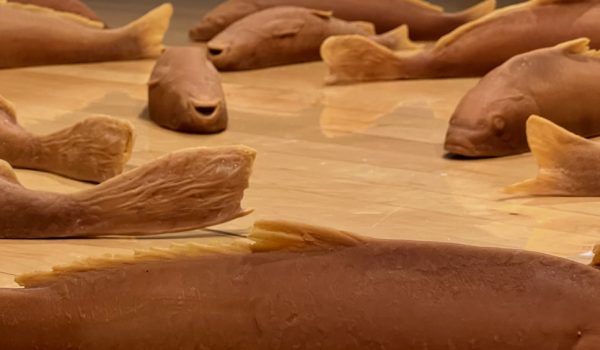
Swirled, 2009
Cast latex
Saurer is an avid fly-fisher from Western states, transplanted to the Cannon River in Northfield, Minnesota. He spends hours tying flies, stalking, and catching the common carp. Gyotaku is the traditional Japanese method of making ink impressions from fish. Here, Saurer draws inspiration from that tradition and makes three-dimensional impressions of carp using cast latex.
Fish are available individually. Please inquire with museum staff.
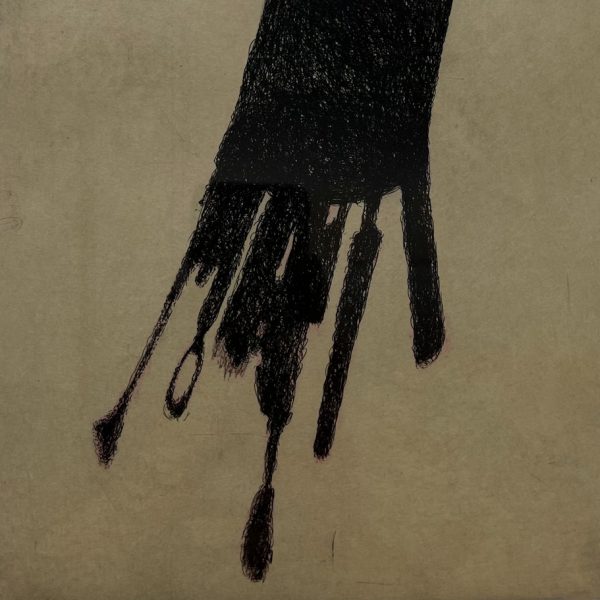
Shadow – Habit Series, 2015
Intaglio print
These nine prints depict shadows cast by ordinary objects. Moving from left to right, the shadows represent the movement of the sun and the arc of a single day. The poet John Armstrong, a longtime friend of Saurer’s, composed the following poem in response to the series.
When I rise,
it is not because the night is gone
or that the morning will slide along
the river bending east, beyond this frozen glass.
Rather,
it is the force of breath pushing back. Back
against this icy air, these curled hands
that carry the matches, to strike
the steel, to light the paper
that fuels the fire of her dreams.
Prints are available individually. Please inquire with museum staff.
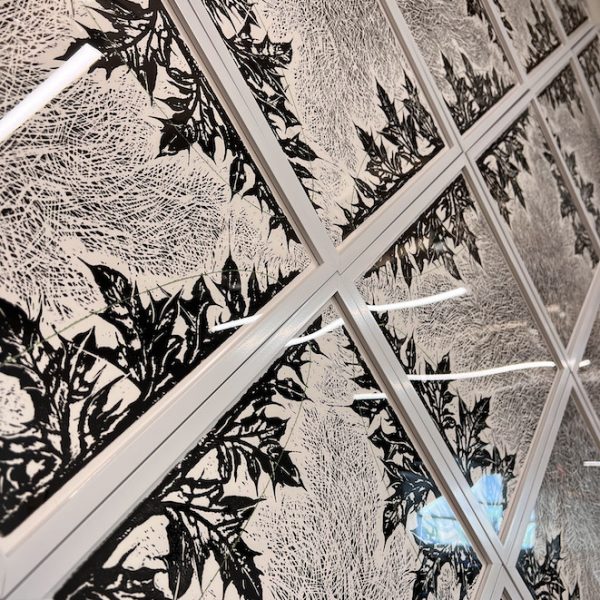
Thistle – Recovery, 2016
Woodcut print and thread
This relief image began as a depiction of an invasive weed called Bull thistle (Cirsium vulgare). Bull thistle grows in disturbed areas such as pastures, roadsides and ditches. It is common in Montana, where Saurer spends time off. He made this work while reflecting on the health issues of close friends. Saurer notes, “It is my hope that the print edition transcends the disdained and becomes something beautiful and hopeful.”
This work is available in sets of four. Please inquire with museum staff.
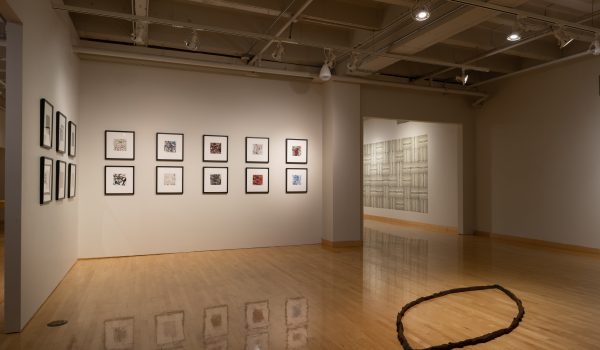
Return to the exhibition guide’s main page
Click here